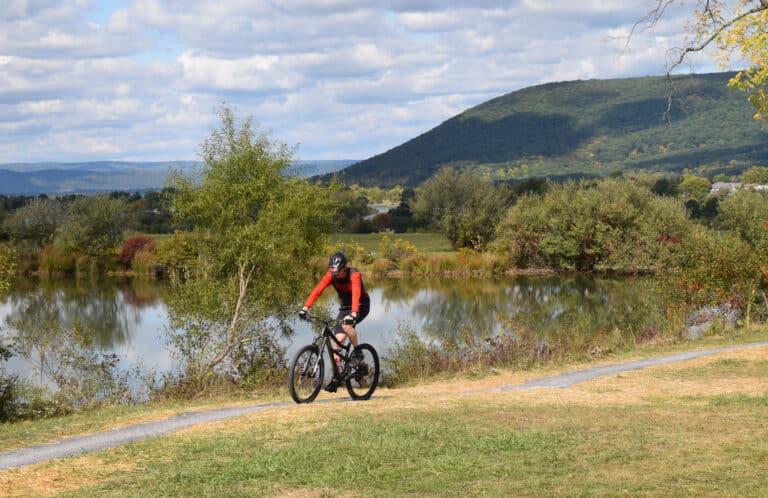My mom was right. After age 40, things begin to shift. My waistbands feel a bit tighter, and my c-section scar seems to bulge out a little more than usual. I don’t feel quite as comfortable running in just a jog bra and shorts—a conservative singlet seems more appropriate. Although running is great for maintaining overall fitness, the fact is, it doesn’t do much for the belly area.
I guess I could cut down on my daily ice cream intake, but that doesn’t feel like a great option. Of course there are the various attempts I have made at core strengthening exercises—doing yoga at sunrise, practicing Pilates in front of the TV at night, even squeezing in two minutes of push-ups and crunches in between meetings at work. My husband is a dedicated practitioner of core work: every evening he comes home from work and heads straight down to the basement to knock it out. Me, I’m not so disciplined. If I’m going to do core exercises, I want immediate results. If that’s not possible, it had better at least be fun.
Given my resistance to any sort of formal core work, imagine my excitement when my friend Barbara invited me to a beginner’s hula hoop class. I checked out the website, which promised that hooping would “tone and strengthen muscles, increase flexibility, and develop core strength.” One of the testimonials described hooping as “a fun way to lose weight, get in shape and feel good about yourself, all while you are having fun!” Okay, I thought, I’m not the most coordinated kid on the block, but I’ll give it a try.
When we arrived at the studio, we were immediately greeted by dozens of beautiful, brightly colored hoops. It was obvious that these weren’t the hoops of our childhood. There were weighted hoops, glow-in-the-dark hoops with LED lights, and hoops filled with water. Before getting to take any for a test spin, however, we learned a bit about the history and culture of hooping. That’s right—it’s not called hula hooping any more. The activity—part sport, part dance—that has been around for thousands of years (Egyptians made hoops out of grapevines 3,000 years ago) and became a pop craze in the United States in the late 50s has evolved into much more. It is now a culture, brought back in the mid-90s by The String Cheese Incident. Hoping to get more people dancing at their shows, members of the jam band threw dozens of hoops into the crowd at the Telluride Music Festival, igniting a movement that is now present at festivals and shows across the country.
From the looks of our teacher, professional hooper Melanie MacNeil, Barb and I were in for more than an exercise class. Decked out in bright shimmering clothing that revealed elaborate tattoos underneath, she moved with a dancer’s grace. Melanie began by teaching us beginner’s moves, the spinning hoops and swaying hips that we remembered from childhood. Nothing to it, I thought, especially using Mel’s custom-made, adult-sized hoops. Just when I was thinking I had conquered the hoop, however, she upped the ante and added more complex movements. Hooping with our eyes closed. Hooping while walking. Hooping on one leg. Putting our arms inside the hoop and easing the hoop up to our necks. How was it that she made it all look so easy, so fluid? We were supposed to holler or make a silly noise every time our hoop hit the ground, and soon yelling and laughter overshadowed the funky music accompanying our dance.
After an hour of hooping, we were all sweaty, tired, and exhilarated. It was easy to understand how this child’s toy could also be a workout tool. The circular motion of hooping gets all of your core muscles working, including muscles in your abdomen, back, pelvis, and hips. Even my arms were burning. Still, the feeling was different than that you get from a typical gym workout. Maybe it was the music, maybe the moves, the likes of which one NPR commentator described as, “sexy, gymnastic, and mystical”—whatever it was, I felt relaxed and young again.
Professional hoopers like Melanie know full well about the emotional and spiritual aspects of hooping. For her, viewing hooping as a fitness routine would be like Tiger Woods describing golf as his hobby. Melanie’s passion for hooping has been a journey that has allowed her to follow her heart’s work of promoting movement as a mode to physical, emotional, and spiritual health. In addition to the physical benefits, she talks about how hooping “creates a mind-body awareness, increases personal empowerment and inward focus, breaks down the ego, and opens channels of energy.” How many exercise programs do all this?
Now, armed with my custom-made glittery pink and black hoop, I can be seen practicing my moves in the yard nearly every afternoon. My abs are sore, my hips and legs are bruised from the hoop banging against them (yes, it’s possible to spin the hoop on your legs; no, that’s not what I was trying to do). My daughter says I’m embarrassing myself in front of the entire neighborhood, but I don’t care—it’s fun. Will I develop abs of steel? Maybe. Will I develop into a hooping goddess like Melanie, with flowing, mystical moves? Probably not. But I will have fun as I try. •
Melanie MacNeil teaches hoop classes in Asheville and performs across the Southeast: www.ashevillehoops.com.









